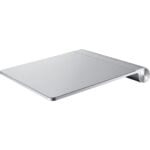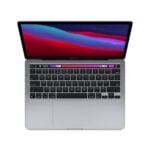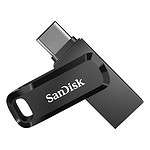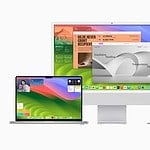Samsung is leading the development of non-invasive glucose monitoring technology, which could transform diabetes management and personal health monitoring. This innovation aims to replace painful finger-prick methods with a system that uses optical sensors in the Galaxy Watch to measure glucose levels through the skin.
As this technology progresses, it may set Samsung apart from competitors like Apple in the wearables market. Other companies are also exploring different non-invasive methods, contributing to a competitive landscape focused on improving health tracking accuracy and convenience. Overall, advancements in wearable technology are enhancing personalized healthcare capabilities.
Exploring Non-Invasive Glucose Monitoring
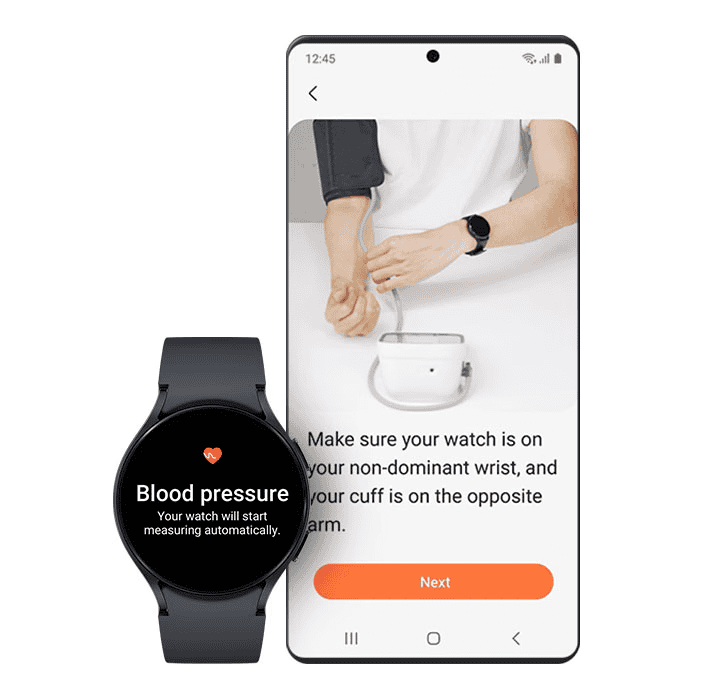
The Promise of Needle-Free Monitoring
For people with diabetes, managing blood sugar is a daily task. Traditional methods involve pricking a finger to draw blood and test glucose levels. This can be painful and inconvenient. Samsung is working on a non-invasive glucose monitor for its Galaxy Watch. This technology uses optical sensors to measure glucose through the skin. It’s similar to how smartwatches measure heart rate or blood oxygen. If successful, this could be a major improvement for diabetes management.
How It Works
Optical glucose monitoring uses light to detect glucose levels in the interstitial fluid, which is the fluid between cells. The sensors shine light through the skin, and the way the light is absorbed and reflected is used to estimate glucose concentration. This method is being researched by many companies, not just Samsung. The challenge is making it as accurate as traditional blood glucose meters.
The Current State of Development
Samsung has been talking about this technology for some time. Executives have expressed hope for its use in wearables within the next few years. Samsung Health forums have also mentioned this as a key focus. However, there is no official release date for a Galaxy Watch with this feature. The technology is still in development.
Comparing Non-Invasive Methods
Several companies are exploring different non-invasive glucose monitoring technologies. Some use radio waves, while others use thermal methods. Each has its own pros and cons:
| Method | Pros | Cons |
|---|---|---|
| Optical (Samsung) | Potential for integration into existing wearables, relatively low cost | Accuracy challenges, influenced by skin tone and other factors |
| Radio Waves | Potentially more accurate than optical methods | More complex technology, may be more expensive |
| Thermal | Non-contact measurement | Accuracy can be affected by ambient temperature |
What This Means for the Future
If Samsung succeeds, non-invasive glucose monitoring could become a standard feature in smartwatches. This could lead to:
- Better diabetes management: Easier and more frequent monitoring could help people keep their blood sugar levels in a healthy range.
- Personalized health insights: Data from the monitor could be used to give people advice on diet and exercise.
- Integration with healthcare: Data could be shared with doctors for remote monitoring.
Questions You Might Have
- How accurate will it be? This is the biggest question. The technology needs to be reliable to be useful.
- When will it be available? There is no official release date yet.
- Will it be expensive? The cost is unknown, but it will likely be priced competitively with other high-end smartwatches.
Alternatives to Current Methods
While we wait for non-invasive technology, there are other options for people with diabetes:
- Continuous Glucose Monitors (CGMs): These devices use a small sensor inserted under the skin to track glucose levels continuously. They are more convenient than finger pricks but still require some level of invasion.
- Flash Glucose Monitoring: This uses a sensor worn on the skin and a reader to check glucose levels. It doesn’t require routine finger pricks but still uses a sensor attached to the body.
The Importance of Accuracy
Accurate glucose monitoring is essential for managing diabetes. Inaccurate readings can lead to incorrect insulin dosages or dietary choices, which can have serious health consequences. Any new technology must meet high standards for accuracy and reliability.
Looking Beyond Glucose: Other Wearable Health Tech
The development of non-invasive glucose monitoring is part of a larger trend of wearable health technology. Smartwatches and other devices are now capable of tracking a wide range of health metrics, including heart rate, sleep patterns, blood oxygen levels, and even stress levels. These technologies are improving rapidly, and they have the potential to transform healthcare by providing people with more information about their own health and allowing for more proactive and personalized care. For instance, the electrocardiogram (ECG) feature on some smartwatches can detect signs of atrial fibrillation, a type of irregular heartbeat. This can help people seek medical attention early and potentially prevent serious complications. As sensor technology continues to advance, we can expect to see even more sophisticated health monitoring features in wearable devices in the future. This could include things like continuous blood pressure monitoring, early detection of infections, and even monitoring for certain types of cancer.
Short Summary:
- Samsung announces development of a non-invasive glucose monitoring feature for its wearable technology.
- The device aims to replace invasive glucose monitors and could significantly benefit individuals managing diabetes.
- Dr. Hon Pak expresses excitement about the technological advancements, hinting at a potential launch by 2025.
For years, the quest for a non-invasive method to monitor blood glucose levels has captivated tech companies and healthcare organizations alike. Samsung’s recent announcements signal a potential breakthrough in this area, as the company reveals its ongoing efforts to develop a continuous glucose monitoring feature that does not require any skin penetration. Traditional continuous glucose monitors (CGMs) have typically relied on invasive techniques that require users to insert sensors under their skin, which many find daunting. Samsung aims to change that narrative, making health tracking more accessible and pain-free.
“What I’m really excited about is our team, as you may have assumed, we are working on a non-invasive optically-based continuous glucose monitor,” Dr. Hon Pak stated at a recent Samsung Health forum.
This advancement is especially significant for diabetics who have long relied on finger-prick tests or devices from companies like Dexcom and Lingo. These products, while effective, can cause discomfort and deter individuals from regular monitoring. According to Dr. Pak, Samsung’s innovative approach will utilize optical sensors to track glucose levels in a manner that is both convenient and effective.
“In particular, blood glucose is a big area of focus for us, and Samsung has been working to develop a sensor algorithm that predicts early signs of diabetes,” Dr. Pak continued, noting that alongside glucose monitoring, the company is also exploring integrated nutrition coaching. This holistically tailored approach not only seeks to streamline diabetes management but also aims to empower users with real-time data on their health.
Samsung’s commitment to advancing healthcare technology comes at a critical time as more consumers turn to wearables to monitor their health metrics. The integration of glucose monitoring into devices like the Galaxy Watch could appeal to a broader audience beyond those with diabetes. Understanding daily glucose fluctuations can help individuals make informed decisions about their diet and physical activity, potentially preventing health issues before they arise.
“The fact that Samsung is happy to talk about non-invasive blood glucose monitoring suggests that the company is confident it’s going to work — and soon,” noted a report from Tom’s Guide.
While Apple has been rumored to be working on similar technology, no official updates regarding its capabilities have emerged. During a conversation with Jeff Williams, Apple’s Chief Operating Officer, it was highlighted that accurate non-invasive glucose measurement is a complex challenge. Despite muscular competition, Samsung’s progressive approach indicates they are eager to seize the opportunity to lead in this crucial area of health technology.
Potential Launch Timeline and What to Expect
Dr. Pak’s remarks, combined with the general buzz surrounding Samsung’s health initiatives, have given rise to speculation about when the non-invasive glucose monitor might debut. The Galaxy Watch 8 is anticipated as the possible launch platform, with reports suggesting that a 2025 release might be in the cards.
“If we do it right, [it] will be a game-changer,” he emphasized, underscoring the importance of meticulous execution in healthcare technology.
Status reports from insiders suggest that Samsung’s engineers are making noteworthy progress, which further fuels expectations of a forthcoming announcement. However, those involved in the development process are cautious not to oversell the product before it is ready for market. It’s fundamental that any new technology developed meets high performance and reliability standards, as inaccurate glucose measurements can lead to serious health risks.
Wider Implications for Health Technology
The introduction of a non-invasive glucose monitor may well herald a new era in preventative healthcare. Dr. Pak’s vision for combining glucose monitoring with AI-driven insights suggests that Samsung is not merely interested in creating another gadget but is genuinely invested in reshaping how individuals manage their health.
Currently, the use of glucose monitors is largely confined to diabetes management. However, if such technology becomes integrated into more lifestyles via wearables, health awareness could increase significantly across populations. It holds the potential to demonstrate correlations between glucose spikes and everyday activities, diet patterns, or exercise routines, ultimately fostering healthier habits overall.
“By combining our long-standing sensor innovations with AI leadership, we aim to elevate our capabilities in preventing diseases,” Dr. Pak elaborated.
Anticipated Features and Technology
Details regarding the precise functionalities of the glucose monitoring feature have yet to be released; however, many speculate that it may incorporate existing technologies present in Samsung’s wearables. For instance, the use of light-based sensors that monitor blood oxygen and heart rate could be adapted for glucose measurement.
Experts believe that the optical sensors Samsung plans to utilize may incorporate advanced algorithms capable of interpreting data to offer personalized feedback. For instance, glucose trends could inform users about the best food choices or optimal times for exercise, integrating healthcare with daily life seamlessly. Health monitoring objectives could extend even further, potentially leading to a more proactive approach to overall wellness.



